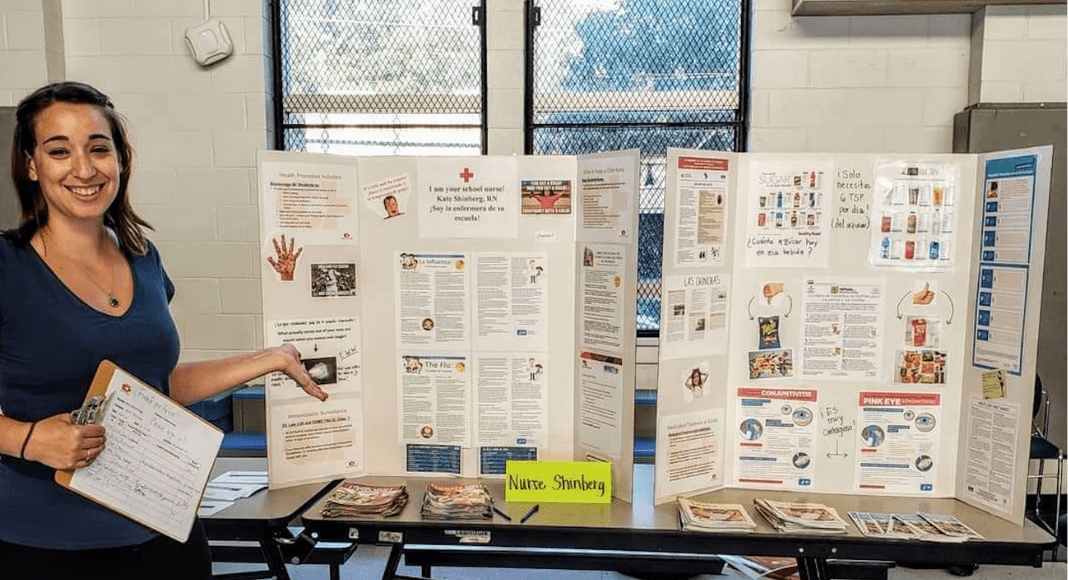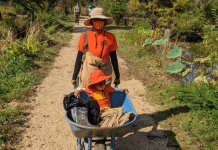It’s 8:30 AM on a bright and sunny Tuesday morning in Winter, and I have already called three parents to pick up their children because of germs and illnesses at school.
It’s me, (Hi!), I promise I’m not the problem, I’m just the school nurse.
The problem? We’re in the thick of it: respiratory illness season. For families, educators and healthcare professionals it’s the time of the year we all dread as everyone tries their best to stay healthy and usually fails. Strep, Flu, RSV… oh my!
 As the school nurse, I am the one to call home and tell you that not only is your child sick, but now you have to leave work and take vacation time you probably don’t have. I jokingly refer to myself as “Nurse Bad News Bears.” It’s a good day when I get yelled at less than 50% of the time. And believe me, I get it! I’m a parent, too.
As the school nurse, I am the one to call home and tell you that not only is your child sick, but now you have to leave work and take vacation time you probably don’t have. I jokingly refer to myself as “Nurse Bad News Bears.” It’s a good day when I get yelled at less than 50% of the time. And believe me, I get it! I’m a parent, too.
So let’s review the top ways for me to avoid calling you and inadvertently giving you heart palpitations when the school number flashes on your cell phone screen.
1. Soap & Water
You can never wash your hands enough! Well, I guess that’s not true. Please do not become a compulsive hand-washer. That’s a whole other bag of beans. Wait, is that even a metaphor? I digress.
As I’m sure you’ve been told more than once, washing hands is an excellent way to kill germs. Just use plain soap and water and scrub those hands for at least 20 seconds (if you’d rather not sing “Happy Birthday“, try Beyonce’s “Love on Top” instead!)
If you’re grabbing for that antibacterial soap, don’t bother. There’s actually no data that suggests that antibacterial soap has any additional benefits outside of the healthcare setting. In fact, in 2016 the FDA actually banned the sale of some over-the-counter antibacterial soaps because their ingredients may not be safe for long-term, daily use. Additionally, using antibacterial soap might contribute to antibiotic resistance, and you definitely don’t want that!
I will say that as an adult, sometimes 20 seconds feels like forever. So convincing a kid to do it? Not so much. But you know what kids love? Evidence. Especially when it’s fun and sparkly evidence! Enter the glitter test (watch it with your kids!), and sorry in advance for the pieces you’ll be finding in your carpet six months from now. I promise it’s really fun though. This is actually something we did in nursing school to see how easily germs are transmitted and what places are hardest to clean when you’re handwashing. Spoiler–it’s the finger nails and finger webs.
2. Hand sanitizer
If you don’t have access to soap and water, hand sanitizer with a 60% alcohol content is a good second-option. Just keep in mind that hand sanitizer is not as effective in germ eradication. For instance, only soap and water can kill norovirus, a horrible gastrointestinal illness that will make your colonoscopy prep seem like a vacation. Imagine soap and water as a long needle and the germ as a balloon. Insert needle–pop! Bye, Felicia.
3. Stay up to date with immunizations
The question I’ve been asked most often as a pediatric nurse is “How can I keep my child safe?” The answer: get vaccinated. Vaccines will help your body fight off that germy invader and if you do end up getting sick, the severity and duration of illness won’t be as arduous.
I know getting a needle is never something someone wants to do, but in reframing the idea, having 30 seconds of pain is a lot better than days of feeling miserable. I know your toddler will definitely accept this logic!
Unfortunately, everything seems to be more ferocious this season. COVID cases are on the rise with a new variant “Eris” (not to be confused with Taylor Swift’s “Eras” tour). Thankfully, an updated coronavirus vaccine that is targeted towards the Omicron variant(s) is now available! Use this handy tool to find vaccines in your area.
The flu has also started rearing its ugly head and has hospitalized thousands. Due to distrust and misinformation, vaccine compliance has dropped considerably. Less than half of adults and kids have gotten the flu vaccine this season.
4. Know the signs
Did you know that Strep can present with vomiting? The symptom I’ve seen in my practice most often in the past few years is stomach ache, instead of the classic sore throat. I’ve also seen it present with only a rash. One child looked like he had a bad case of bug bites…strep!
The most common communicable illnesses in schools, other than COVID, include RSV, strep, flu, conjunctivitis, lice and gastroenteritis.
As most medical practitioners will tell you, everything has gotten worse since the pandemic. Illnesses that presented mildly before now act like they’ve got something to prove. The onset of COVID-19 triggered the onset of a new kind of viral mayhem (thanks so much, ‘rona!).
5. Take action early!
The best way to stay safe has not changed: wash hands, stay home when you’re sick, get good sleep and stay current with immunizations. And when you notice that nose begin to drip or your kid seems a little more lethargic than usual, trust your parent-tuition. If you feel that uneasy sense in your gut, it’s probably because something nefarious coming your way.
There is some good news, which is that there are some very effective medications for these nasty illnesses. Most of them work best if given within a certain window (usually the first 48 hours). COVID antigen tests are available again at the DC libraries, while the government is offering another round of free rapids to be shipped to your home. A note of caution with antigen tests: sometimes these can take up to 5 days to flag a positive result, so take your day 0-5 results with a grain of salt.
Lastly, I know everyone is mask-fatigued *and* they do mitigate the spread of disease. So if you know you were exposed to someone, or you have active respiratory symptoms, pop that mask on! It could save you or someone you love days, weeks, or even months, of feeling like poop.














